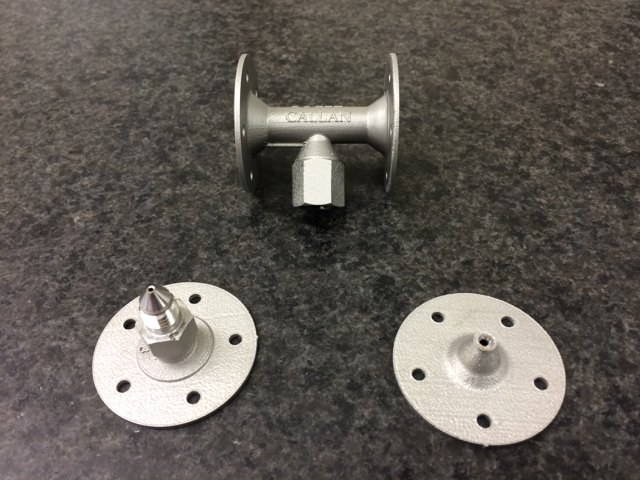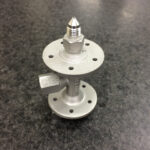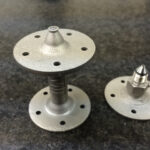Full Scale Rapid Prototyping Services From MTI
May 24, 2016Improving Build Parameters Means Improving MTI’s 3D Metal Printing Service
June 30, 2016CubeSat Engine Successfully Printed | Aerospace Additive Manufacturing
Metal Technology successfully printed and processed its latest initiative in aerospace additive manufacturing – the engine for the CubeSat, Triteia. This engine, named Callan, is the final piece of a project that MTI has been working on with UC San Diego student organization, the Students for the Exploration and Development of Space (SEDS).
 This week we had the chance to catch up with Darren Charrier, Officer of External Affairs for SEDS, to learn more about what this success in aerospace additive manufacturing means for the CubeSat team:
This week we had the chance to catch up with Darren Charrier, Officer of External Affairs for SEDS, to learn more about what this success in aerospace additive manufacturing means for the CubeSat team:
“Right now we are in the testing phase of our project, essentially taking our designs and validating their expected properties. We are extremely excited to be working with Purdue University in Indiana to test our 3D printed thruster on June 15th! This will be a huge step for our team, and I am very proud of all the hard work our team has put in to get to this point.”
As Darren said, with the successful printing of Callan, things are ramping up for the SEDS team. Their next step is to begin preparing for the Ground Tournament 3 of the  NASA Cube Quest competition which will take place on August 5. Over the next two months, the team will be putting Callan through a series of tests that will evaluate the structure, power system, and antenna. During this time they will also be finalizing their designs for valves and propellant tanks, as well as writing flight software. In order to validate the design and capabilities of the thruster, the SEDS team will be traveling to Purdue in June to test Callan at their peroxide facilities. The data that is gathered during these tests will be critical to proving the team’s subsystem designs at the Ground Tournament 3.
NASA Cube Quest competition which will take place on August 5. Over the next two months, the team will be putting Callan through a series of tests that will evaluate the structure, power system, and antenna. During this time they will also be finalizing their designs for valves and propellant tanks, as well as writing flight software. In order to validate the design and capabilities of the thruster, the SEDS team will be traveling to Purdue in June to test Callan at their peroxide facilities. The data that is gathered during these tests will be critical to proving the team’s subsystem designs at the Ground Tournament 3.

Timeline of Upcoming Events
June 15: Testing at Purdue University
Early July: Antenna testing at UCSD’s Engineering Department
August 5: Ground Tournament 3 Submission Due
Post-Processing For Aerospace Additive Manufacturing
Following the successful printing of Callan using the ProX 300 Printer, the structure was submitted to post-processing. This process began with removing the support medium from the engine using Wire EDM. Next, the measurements and dimensions of Callan were taken using a Zeiss CMM (coordinate measuring machine) to ensure that the geometry matched that of the initial design. The third and final step of post-processing is to polish the part using a vibratory finisher.
Check out the video below for a first-hand look at the post-processing of Callan:
About Metal Technology (MTI)
With more than forty years of experience applying innovative, proprietary technologies, Metal Technology (MTI) is making possible the use of difficult alloys for a wider range of applications with greater efficiency, versatility, and reliability. Alloys include Tantalum, Niobium, Zirconium, Titanium, Tungsten and Molybdenum. MTI uses specialized deep-draw, spinning, forging, machining, EDM, and additive manufacturing methods to deliver superior products according to your exacting specifications.
Contact us for more information on our aerospace additive manufacturing initiatives.

